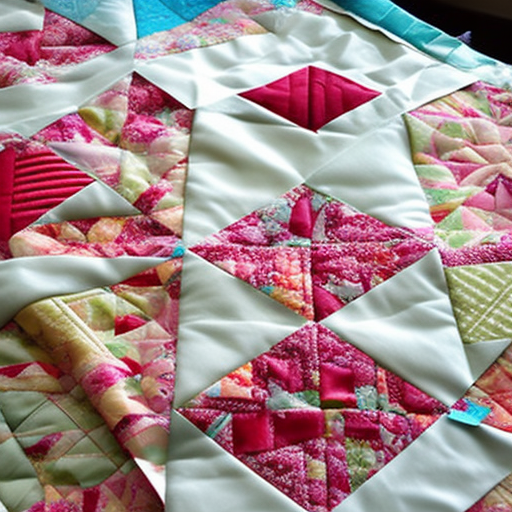
Quilting is a textile art form that has a rich history dating back centuries. It is believed to have originated as early as Ancient Egypt, with evidence of quilted garments found in Egyptian tombs dating back to around 3400 BC.
However, it was not until the Middle Ages that quilting truly gained popularity and became a way of life for many people. The art of quilting spread across various cultures and countries, adapting and evolving as it passed from one generation to the next.
The Origins and Purpose of Quilting
The origins of quilting can be traced back to the functional need for warmth and protection from the elements. Quilts were initially created as utilitarian pieces, often made from discarded clothing or fabric scraps. The layers of fabric were stitched together to create a thicker and more insulating textile.
As quilting techniques developed, decorative elements and intricate patterns started to emerge. Quilts became more than just functional bedding; they became works of art, reflecting the creativity and skill of the individuals who made them.
Early Quilting Techniques
In medieval Europe, quilting techniques were passed down through generations, often done by women within their families or community groups. These quilts were created using a method called “whole cloth” quilting, where a single piece of fabric was used for both the top and bottom layers, with intricate quilting designs stitched onto the surface.
As time progressed, patchwork quilting became popular. This style involved using smaller fabric pieces, often in geometric shapes, to create intricate patterns and designs. These quilts showcased the resourcefulness of their makers, as they utilized scrap fabrics and combined them into beautiful compositions.
Quilting in America
Quilting gained significant popularity in America during the 18th and 19th centuries. It was an essential part of women’s lives on the frontier, providing warmth and comfort to their families. Quilting bees, where women would gather to quilt and socialize, became a social event and an opportunity to showcase their creativity.
Quilt patterns began to represent aspects of American life, such as the Log Cabin pattern, symbolizing the home, and the Underground Railroad quilts, which contained secret messages to aid escaped slaves on their journey to freedom.
Today’s Quilting
In modern times, quilting continues to be a cherished art form. It has evolved into a popular hobby and creative outlet for people of all ages. Quilters now have access to a wide range of fabrics, tools, and techniques to explore, resulting in stunning and innovative creations.
Quilting is not only a means of expressing oneself but also a way to preserve traditions and tell stories. Quilts often hold sentimental value and are passed down through families as heirlooms, connecting generations and preserving memories.
Whether it’s through traditional or contemporary designs, quilting remains a beloved craft that celebrates history, creativity, and the art of stitching fabrics together.
References:
-
- Rajtar, J. (2015). A Quilter’s Ark: More Than 50 Designs for Foundation Piecing. ISBN 9780486799555.
-
- Allen, B. (2010). The History of Quilts and Patchwork Worldwide with Photographic Reproductions of 100 Antique Quilted Pieces. ISBN 9781844769385.
-
- Horton, L., & James, B. C. (1996). The Fine Art of Quilting: With Complete Instructions for Beginners. ISBN 9781567992570.

Fascinating history!
Anna Lee: Very interesting!
Sakina Gomex: I love learning new things!
Lizelle Anne: This is so cool to read!
I’m so intrigued to find out the answer to this! Quilting has a long history, which spans across many beloved traditions, so it would be exciting to discover how it all started!
It’s so cool to read about the history behind quilting – what an incredible journey to uncover the story of how it all started!
Absolutely! I can’t wait to read more about it!
Agreed! This would be a fascinating journey to learn more about!
Absolutely! I’m looking forward to learning about it with all of you!